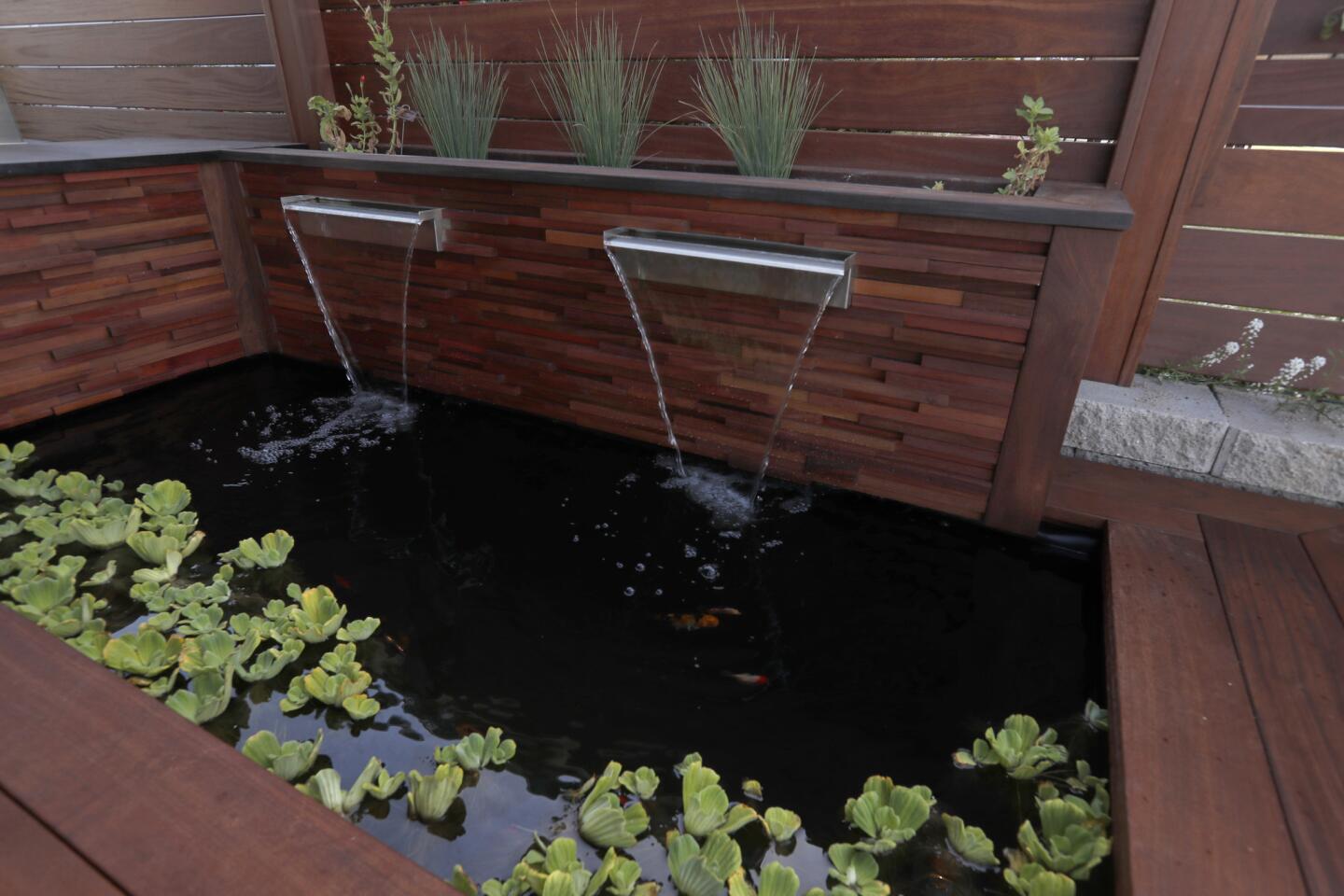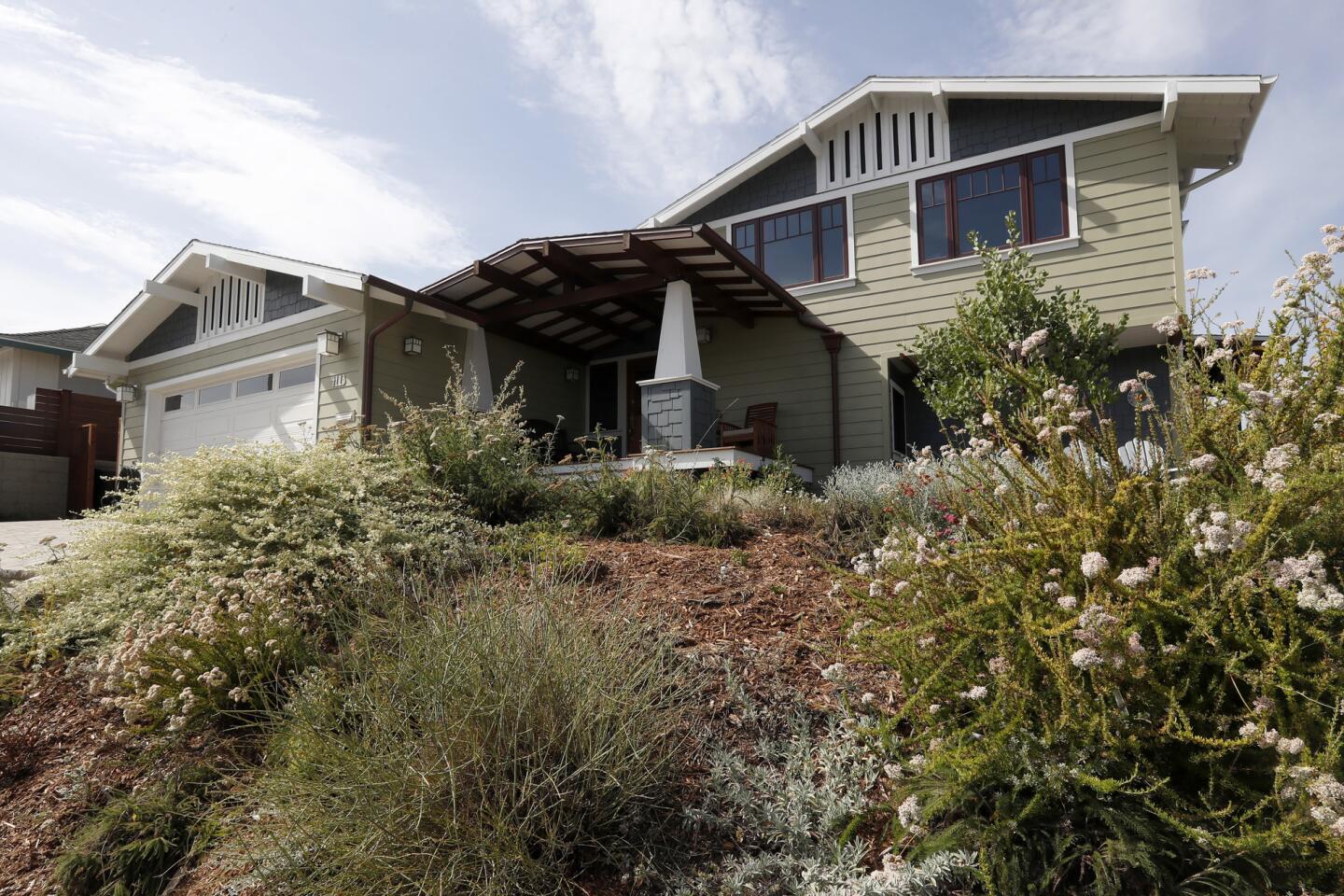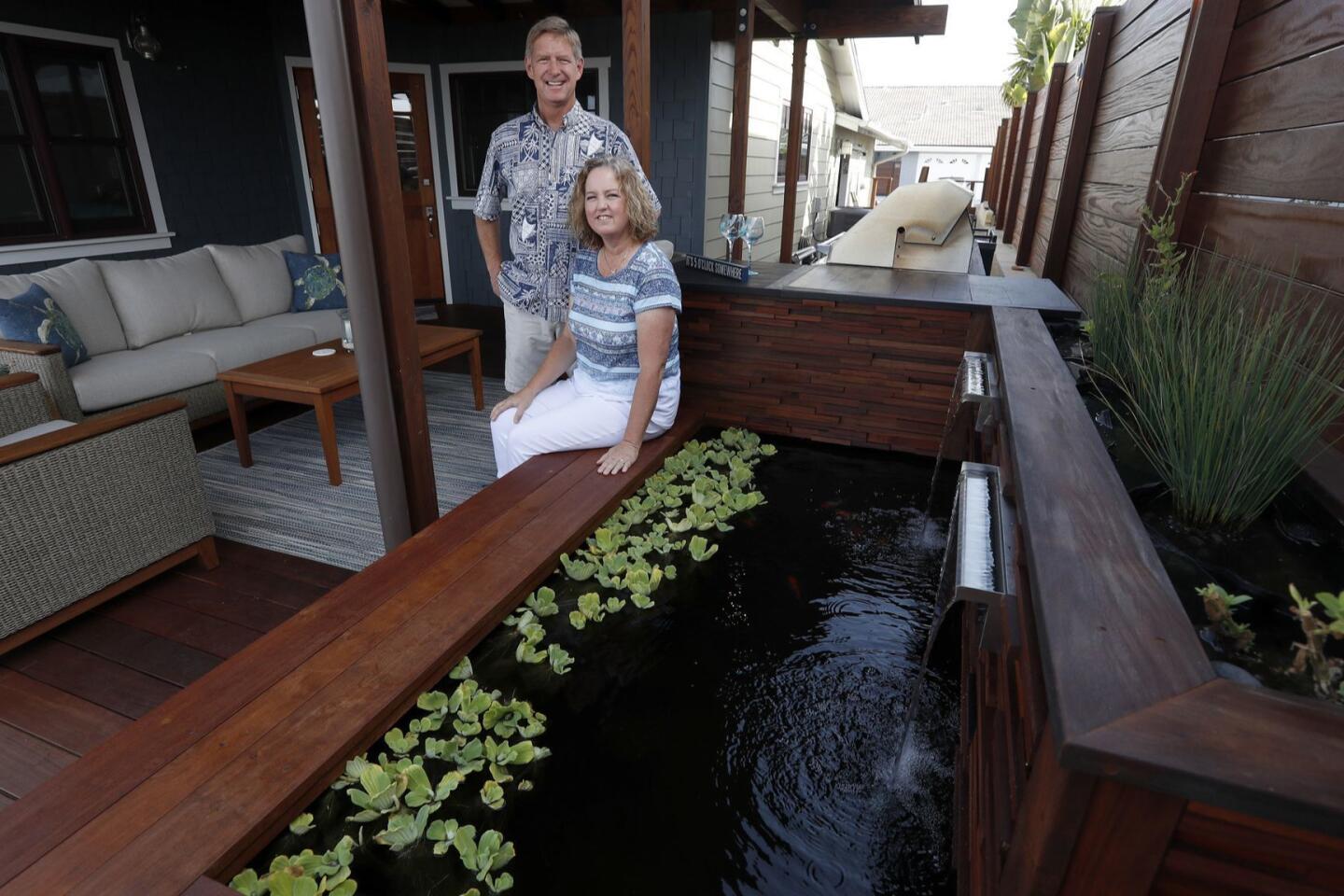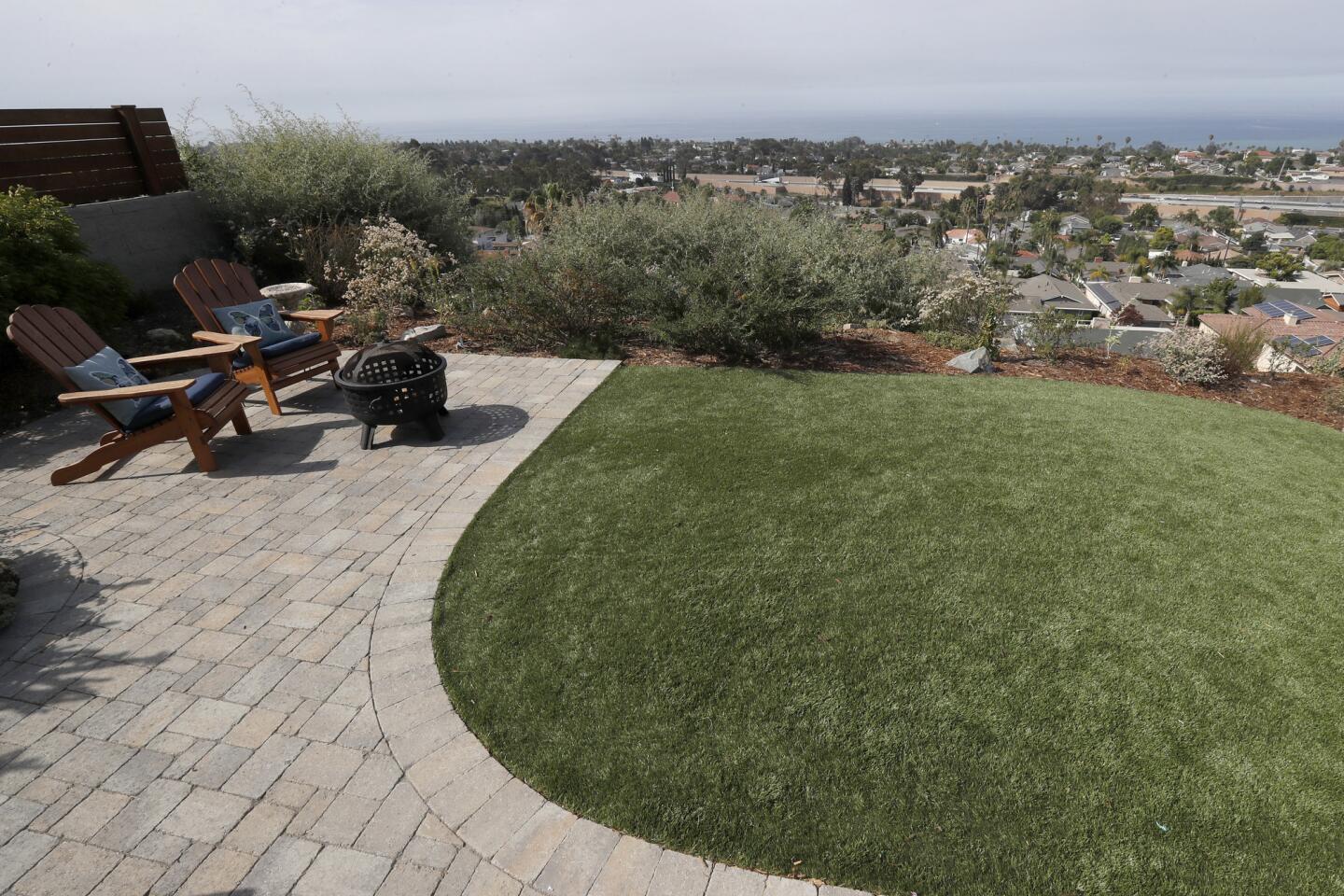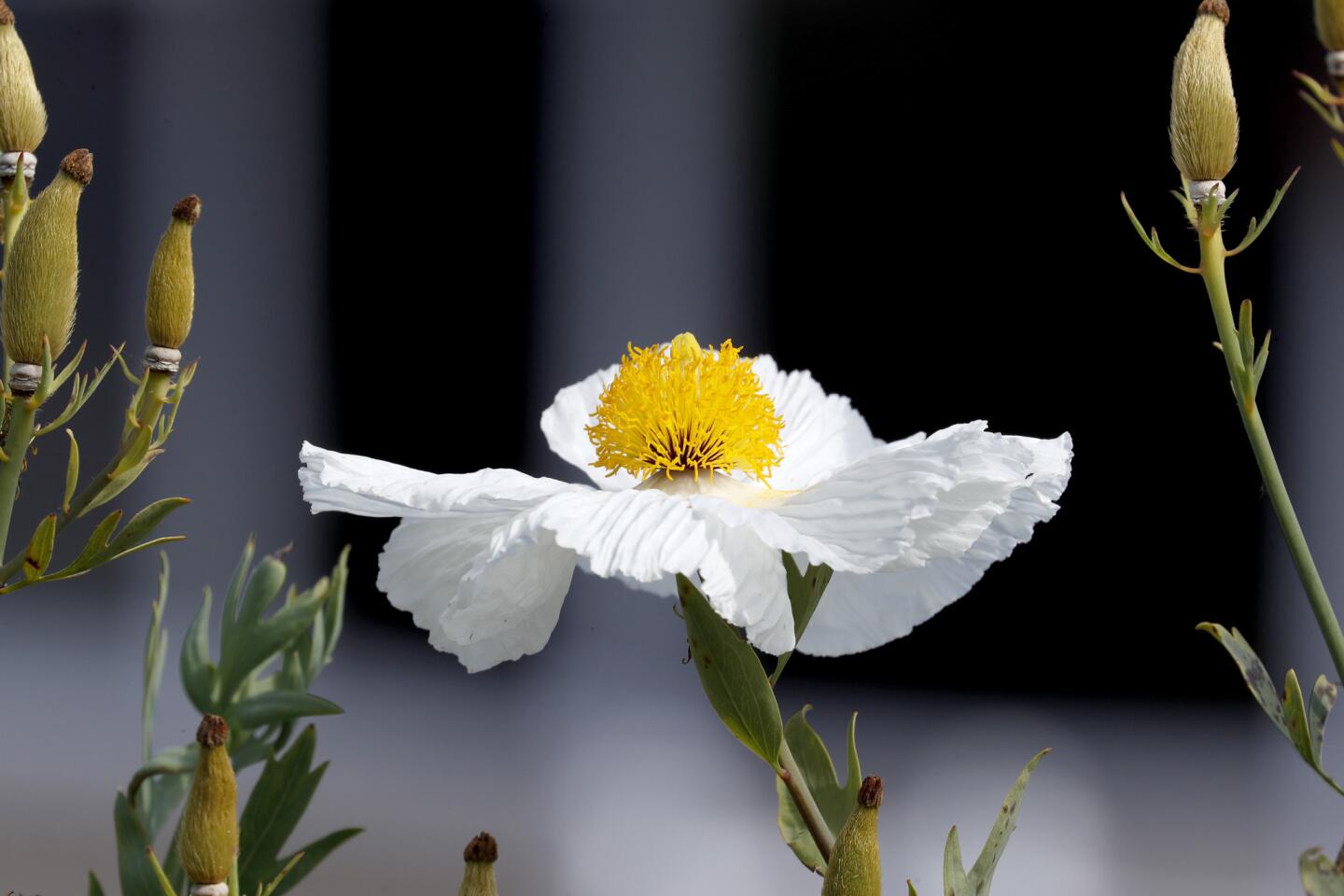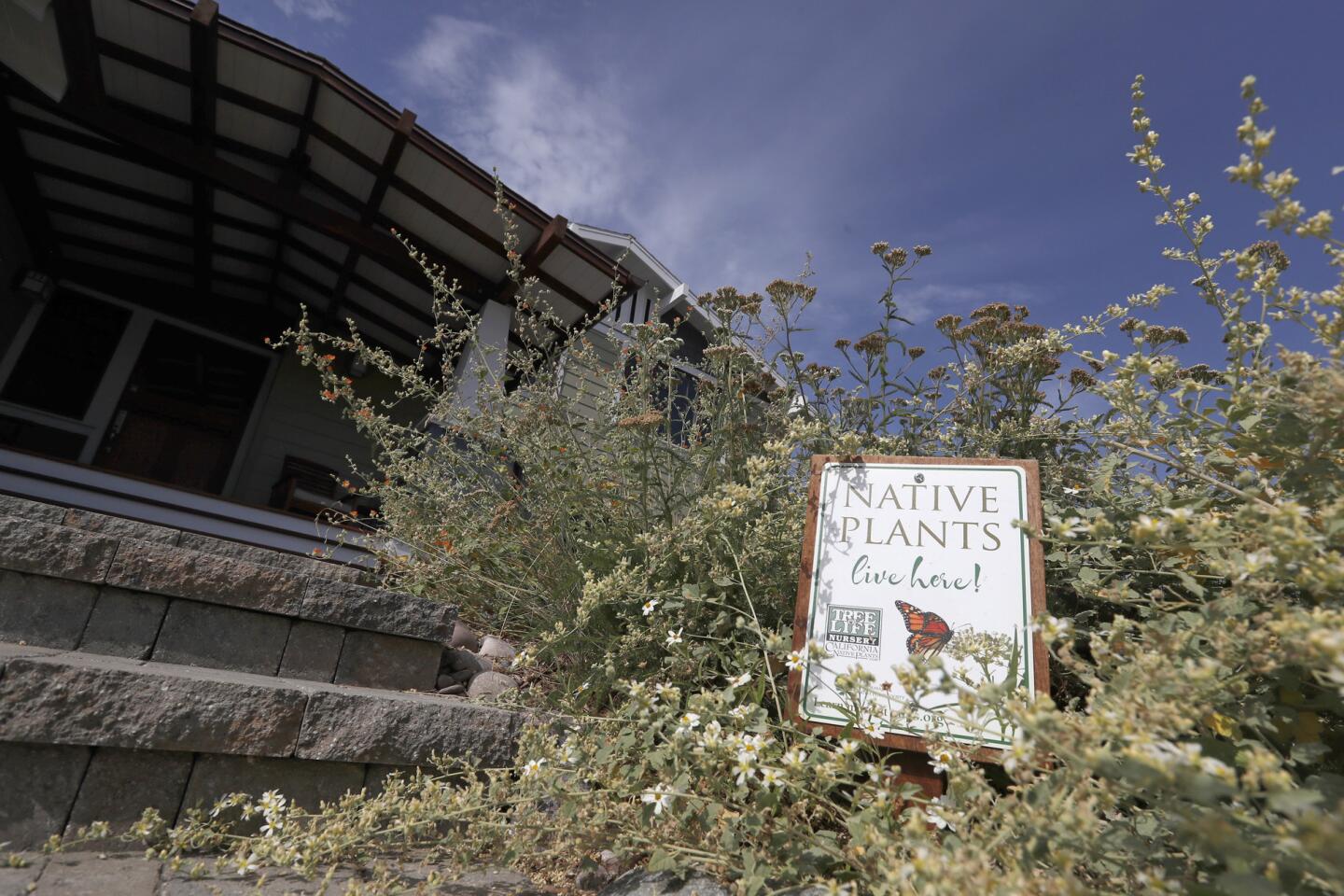A nightmarish backyard is reborn as an award-winning habitat that butterflies love
When Dave Ethington inherited his parents’ San Clemente home in 2015, it was part gift, part nightmare.
The hilltop home had a spacious backyard with spectacular views of the ocean, so beautiful that Dave and his wife, Kris, were married there in 1989. But over the years, the yard had become overrun by juniper and ivy, while water kept pooling around the foundation, destabilizing the clay soil and inviting termites to feast on the beams.
Luckily, by the time the Ethingtons took over the house, they had 18 years of equity in another San Clemente home. They soon realized they were going to need most of that $500,000 equity to stabilize the foundation, eliminate the termite damage (“One beam was so bad you could remove parts of it with your hands,” Dave said), re-route the water and remodel the house and yard.
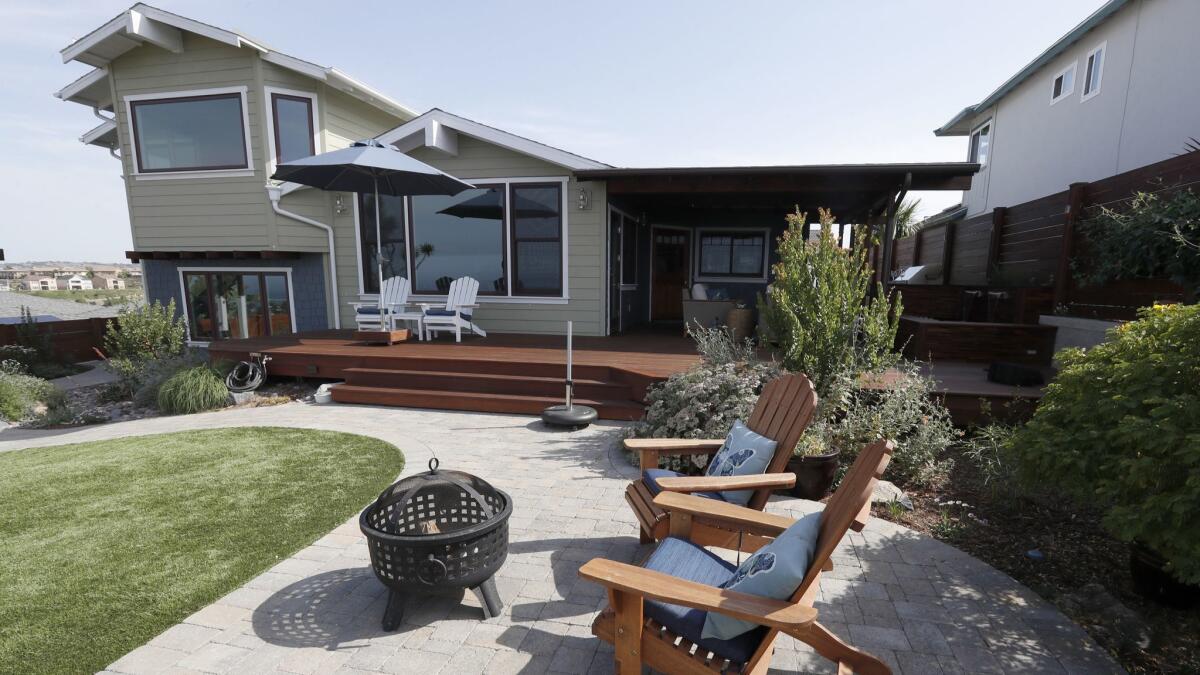
Today, some interior work remains, but the foundation is well anchored to casons buried deep in the ground, dry wells and a backyard “creek bed” are routing water away from the house, and the yard is landscaped almost exclusively in colorful native plants, making it a magnet for pollinators and garden tours, and the first-place winner of Orange County’s 2018 California Friendly Garden contest.
Why only native plants?
“I blame the butterflies,” said Kris, who oversaw the landscaping while Dave focused on building the new deck and other woodworking around their house.
When their two children were young, she said, the family became fascinated by the life cycle of butterflies. She joined the San Clemente Garden Club and the California Native Plant Society to discover the best ways to attract them to her yard.

“I learned if you plant the right host plants, bees and butterflies will come,” she said, and all it takes is a glance around her yard to confirm that. The Ethingtons’ landscape is teeming with beneficial insects and birds, attracted by the abundant blooms of natives such as buckwheats, salvias, mallows and milkweed, the favored food of monarch caterpillars.
There were practical considerations too. Going native meant the Ethingtons didn’t need to install a sprinkler system. The plants needed some regular watering to get established when they were first planted late in 2016, but the homeowners now just hand water every three weeks when it’s hot, Kris said, and stop watering entirely when the weather turns cool.
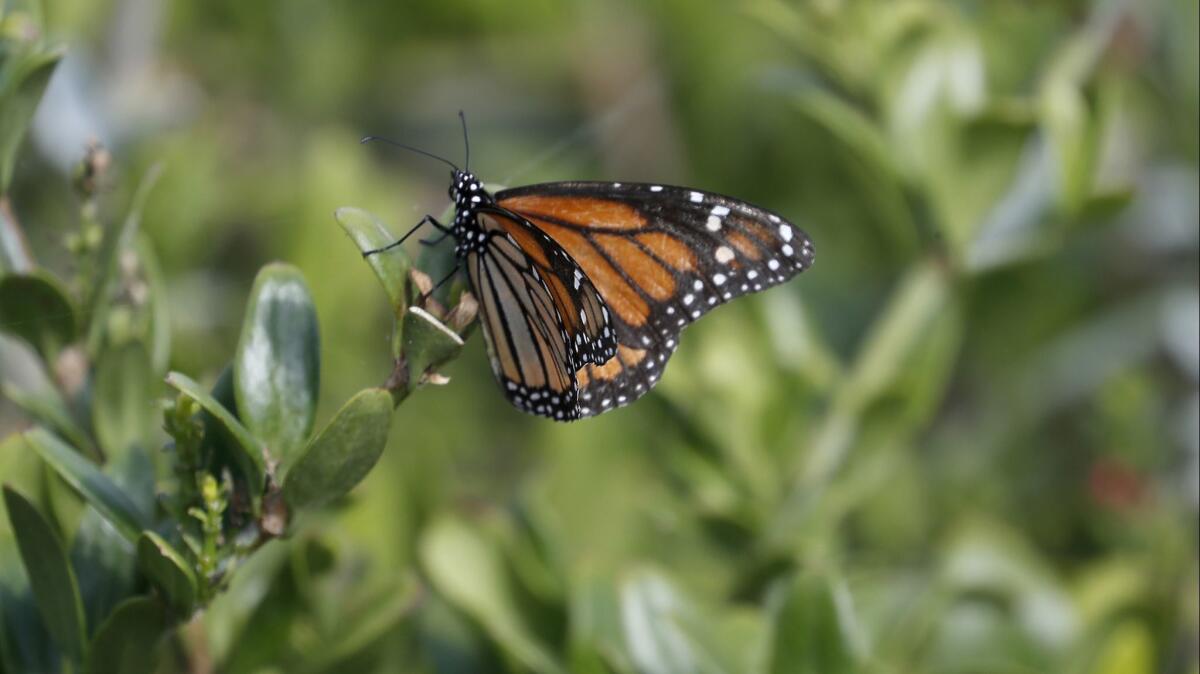
The dry wells and creek bed provide another water source. Being so near the ocean, they have a lot of dewy run-off from the roof that used to pool around the foundation, Dave said. Now they have rain gutters that direct the moisture to underground dry wells dug 2 feet wide and 3 feet deep, filled with permeable landscaping fabric and rocks. The wells allow the water to slowly seep into the garden, encouraging the plants to send their roots deep into the ground to find that moisture.
When they get a heavy rain and the wells get full, underground overflow pipes carry the water to the drainage ditch in the street, reducing erosion in the hilly yard.
The Ethingtons’ yard “is an extraordinary example of a low-water, climate-appropriate and wildlife-friendly garden, said Ron Vanderhoff, general manager of Roger’s Gardens in Corona del Mar and creator of Orange County’s California Friendly Garden Contest, which drew nearly 60 entries this year.
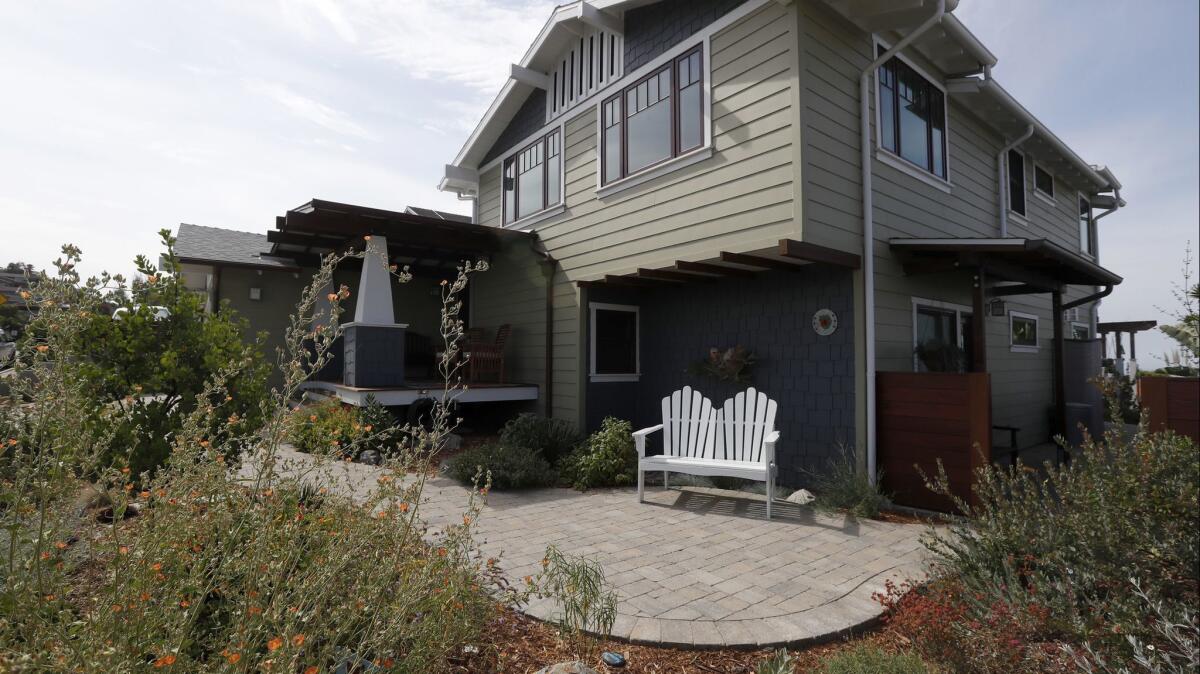
Tips for going native
Here are the Ethingtons’ tips for people who want to go native:
Get some help
Unless you have infinite energy and time, hire out the harder jobs. The Ethingtons are big DIY folk, but even they had to throw in the towel when it came to removing a hillside thicket of 50-year-old juniper and ivy. “We’d probably still be hacking away,” Kris said.
Plan now, plant in the fall
Many natives go dormant during the hottest months, and few perennials do well when planted in the dead of summer, so use this time to browse native plant classes and nurseries, such as the Theodore Payne Foundation for Wild Flowers and Native Plants in Sun Valley and Kris’s favorite, the Tree of Life Nursery in San Juan Capistrano.

Keep your soil
Kris had to fight to keep her contractors from removing too much of the native clay soil. Native plants prefer native soil, she said, minus the amendments other plants tend to love.
Be patient
Native plants can look small and drab when they are young, said Kris, so even if you know what it’s supposed to look like, “It’s a leap of faith that it’s going to look good someday.”
Read the tags
If natives find the right spot, they can grow into monsters, so plan accordingly, Kris said. The unassuming quailbush she planted on Thanksgiving 2016 has grown at least 8 feet high and 10 feet wide, creating so much habitat that bunnies have moved in and started nibbling on her young plants.
